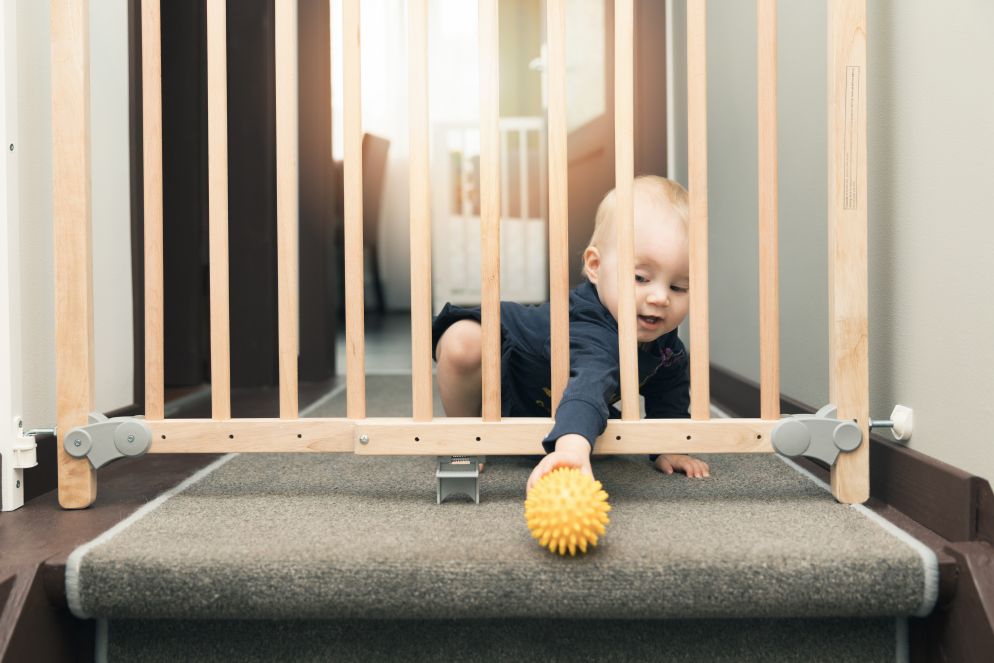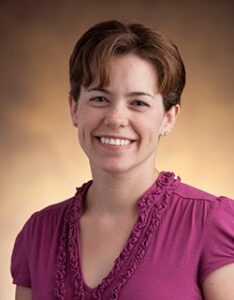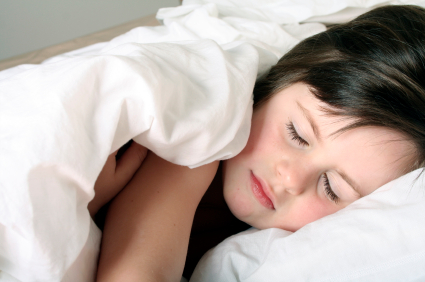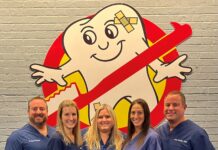
Baby-proofing is an important step in every parent’s journey. As children grow, so does their curiosity. The goal is to make your home a safe place for them to play and explore without risking injuries.
To create our baby-proofing guide, we reached out to two pediatricians — Jonathan Miller, who practices at a Nemours Hospital clinic in Wilmington, Delaware, and Rachel Plotnick, a member of GMBC’s Pediatric Group, in Towson, Maryland.
Both have three children of their own, and each pediatrician has more than 16 years of experience. Here’s their advice on how and when to baby-proof.
The Time is Now
Baby-proofing needs to be done by the time your little one is rolling, crawling and exploring, and most parents wait until then, but Plotnick recommends doing it before the baby is even born. Once the baby is here, you’ll have your hands full, she says.
So where to start? Miller recommends a somewhat unconventional method:
getting low.
“When I talk to families about child-proofing and safety, usually when kids are around 6 months old, I encourage people to get down on their hands and knees and crawl around their home. You’ll find outlets [and] cabinets that have things you don’t want a baby to have access to,” Miller says.
Here are some of the top hazards to address when baby-proofing:
Stairs
Miller says falls down the stairs are one of the most common mishaps he sees. Stair safety should include baby gates at both the top and bottom of the stairs, he says.

“Teach your child how to navigate the steps safely by crawling. Bring them to the steps, position yourself below them and teach them how to crawl down the steps feet-first. That way, if they do find themselves with steps, they know how to do it safely,” Miller says.
Burns
Another common injury Miller sees is burns to the face and chest from children pulling hot foods or drinks off of tables.
“Think about anything you put on a surface or near the edge of a surface that infants may not see but can get their hands on,” he explains. “Don’t put hot, sharp or breakable things near the edge of a table.”
This is important guidance to give visitors, too, Miller says, because more often than not, it’s a friend’s or grandparent’s cup of coffee.
Furniture
Think about things that could fall down if shaken or climbed on, such as bookshelves or dressers. These items can be anchored to the wall to keep babies safe. Another risk area, according to Plotnick, is around corners and furniture with sharp edges.
Doors
Toddlers will open doors before you’re ready for it. Occasionally, they’ll open doors they aren’t supposed to open—the scariest of those being front doors, Miller says. Add childproof knob covers and make a habit of locking any doors that can lead out of the house.
Small Items
Some of the most dangerous things to look out for are the smallest—those small enough to fit in an infant’s mouth or be swallowed. When Plotnick’s children were born, she switched away from laundry pods entirely. The brightly colored pods can look appetizing to young children, who often explore with their mouths.
Other small items with a big risk attached are button batteries. “Button batteries can cause damage in three ways,” according to the Children’s Hospital of Philadelphia (CHOP). “They can create an electrical current, put pressure on sensitive tissues and leak harmful chemicals, which can cause burns to the throat and stomach.”
Plants
Plants in and around your home are usually harmless, unless you start putting them in your mouth. Many common plants can pose a danger to infants, including unripe tomatoes, potato sprouts, nightshade, azaleas and oleanders. Even peace lilies can pose a
serious danger to young children.
Review CHOP’s poisonous plant guide at chop.edu/centers-programs/poison-control-center/poisonous-plants.
Water
“Kids can drown really quickly and really silently,” Plotnick says.

According to the Children’s Safety Network, nearly 900 children in the United States die every year from unintentional drowning. Drowning doesn’t always happen in a regular pool; it can happen in a tub, a kiddie pool or even in a bucket. Children should always be supervised around water, and bathtubs should be drained right away when not in use.
Medication and Drugs
Another common household hazard parents should pay special attention to is placement of medication or recreational substances like cannabis or liquid nicotine. Liquid nicotine from e-cigarettes, e-hookahs, vape pens and other electronic nicotine devices can be absorbed
through the skin or swallowed. Even a small amount can be fatal in the hands of a toddler.
“Know when you have these products in your house and store them far away, and be careful when you use them,” Plotnick says.
Prescription medications often arrive from the pharmacy in childproof bottles. Be sure not to transfer them to baggies or other easier-to-open containers.
Accidents Will Happen
“Even if you have all the right things, you still have to use them right,” Miller says. “I had one of my children topple down the stairs; they were okay, but it happened even with the gate because it wasn’t closed. A lot of us get lax, and that’s when things happen.”
Every parent has had, or will have, a close call like this one. For Plotnick, it was in a vacation home when her 18-month-old son quickly found a ladder to climb while she had a conversation with a friend. Luckily, the child was spotted before anything could happen, but accidents can happen very quickly, especially in unfamiliar environments. Plotnick says any time you’re on vacation with a young child, make it clear who is watching the child and make sure that person always has eyes on the child. This is also the case when expecting company. Have a plan in place in case of distractions or hire a babysitter.
Using baby-proofing guides like this one and following advice from your pediatrician can decrease risks dramatically. “We can’t prevent everything, but we can be really careful about the most dangerous stuff,” Plotnick says.
Regional Resources
SAFE START is a mom-owned Washington, D.C. business that provides a professional child-proofing service in D.C., Maryland and Virginia, including in-home consultation, home safety plans and installation services. safestartchild.com.
BabyProofing Montgomery serves Maryland, D.C. and Northern Virginia. Its child
safety experts offer professional consultations, home safety evaluations and product
installation services. babyproofingmontgomery.com.
Ouch Proofers offers child-proofing services in D.C., Delaware, Maryland and Virginia. The D.C.-based company is a one-stop shop for child-proofing projects, from estimate to materials to completion. ouchproofers.com/services/childproofing-at-your-home
Safe Kids Frederick County is a county health department program dedicated to preventing child injury through efforts including providing materials on home, swim and poison safety. health.frederickcountymd.gov/588/Safe-Kids-Frederick-County






